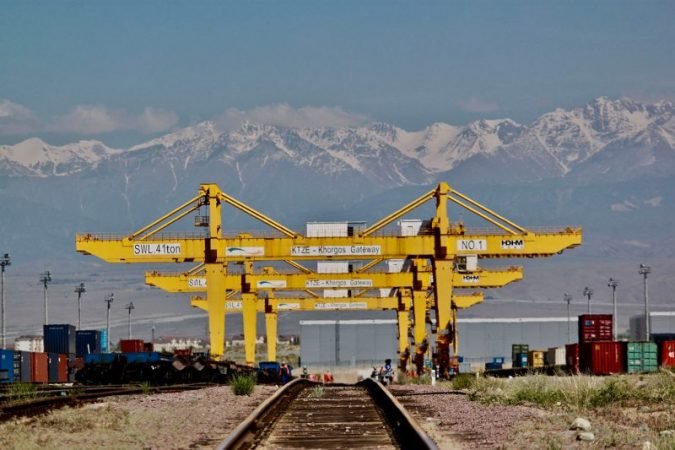Chinese investments in Central Asia

After the fall of the Soviet Union in 1991, China established official ties with the five former Soviet Republics of Kazakhstan, Kyrgyzstan, Turkmenistan, Tajikistan, and Uzbekistan. While originally the main focus of its political and diplomatic activities was to settle the Soviet legacy of disputed borders and later its ties with Central Asia started to reflect a growing desire to protect broader economic and security interests in the region. Since then the overall trade with the region has increased 100-fold.
In recent years China started looking at Central Asia as an economic alternative for its ambitious projects, as it holds out the biggest promise for it, as a strategic source of raw materials as well as a transit route to the oil-rich region of the Caspian region, and possibly even the Persian Gulf.
In September 2013, China announced The Belt and Road Initiative (BRI) which connects Asia with Africa and Europe via land and maritime networks along six corridors. It is a massive new trade corridor project, which has also been referred to as the New Silk Road. Kazakhstan was the first country of Central Asia region to respond to the launch of the Belt and Road Initiative (BRI) by linking it with its five years (2015–19) domestic developmental program Nurly Zhol (Bright Path). At that time China becomes a lifesaver for Nurly Zhol.
After this developmental trend spread to other regions as Chinese investment expanded into import substitution (such as a cement factory in Tajikistan) and value-added sectors (such as textile factories in Uzbekistan) alongside further infrastructure projects. Gas pipeline from Turkmenistan to China, the Atyrau-Alashankou oil pipeline from Kazakhstan to China, significant investments in energy transport and communication in Uzbekistan, the construction of new roads and tunnels in Tajikistan.
To increase economic engagement in Central Asia, China increased political, diplomatic, and cultural ties. All five countries in the region have signed strategic agreements with China. High-level visits by Chinese officials have intensified. Confucius Institutes, which offer language courses and cultural programmes, are now present in Kazakhstan, Uzbekistan, Kyrgyzstan, and Tajikistan.
Central Asia sees BRI projects very promising as it will help regional countries to increase connectivity, expand regional trade, and modernise their obsolete transport infrastructure. For China, the BRI is the way to deliver public goods, promote global connectivity, and portray itself as a responsible stakeholder. Although the BRI is an ambitious global strategy.

But overall Central Asia’s reliance on Chinese investment includes inefficient resource allocations, lack of due diligence by Chinese banks, corruption, unfulfilled contracts, lack of transparency, lack of coordination with other donors and lack of investment in soft infrastructure. There are also concerns about the potential for predatory lending, debt spirals and a lack of corporate social responsibility.
The expanding economic, geopolitical, and business presence around the world demonstrates China’s eagerness to play a more significant role in the systems of international governance and law.


















